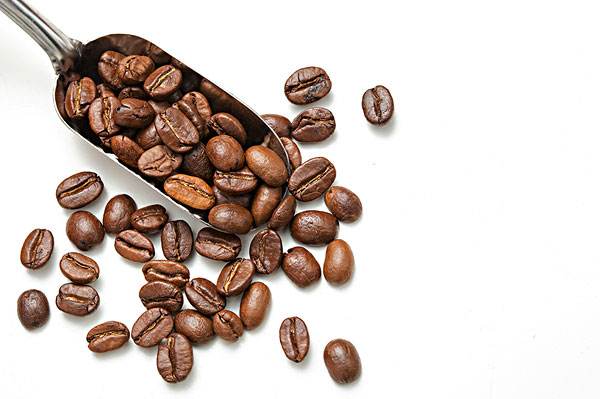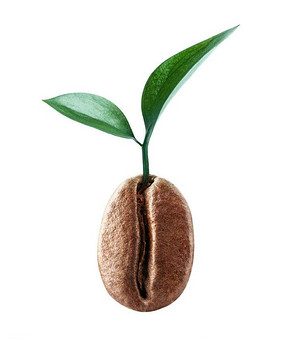Introduction to the flavor and flavor of Hawaiian coffee
Follow the caf é (Wechat official account vdailycom) and found that Beautiful Cafe opened a small shop of its own.
Hawaiian coffee is fresh, crisp, medium-bodied, slightly sour and full-bodied, with a long finish. The most rare thing is that it has a mixed aroma of wine, fruit and spices, as charming as the colorful colors of the Oriental Hotel.
Hawaii, which spans latitudes 19 to 22 degrees, south of the Tropic of Cancer, the trade-wind-blown Hawaiian Islands, is a perfect coffee-growing area. The 50th state of the United States, 2400 miles from the west coast of the United States, is the only state in the United States that produces coffee. Hawaii's coffee is also internationally renowned as one of the best coffee in the world.
Most coffee is grown on the slopes of MaunaLoa. Mauna Loa was originally a volcano located in the western part of the Kona region on the island of Hawaii. The coffee producing area is about 30 kilometers long and its growing areas are mainly concentrated in the north and south of the area. Coffee trees are planted in relatively desolate areas, but their soil is fertile and contains volcanic ash.

The most famous coffee bean and coffee producing area in Hawaii is Kona, which is located in the southwest of the Big Island, 20 miles long and 2 miles wide, covering the slopes of Hualalai and Mauna Loa. Only coffee beans grown in this area and subject to the most stringent certification standards can be sold under the trademark "Kona". Today, about 100 farms have produced coffee beans that meet these standards, and more and more farms are expected to follow suit in the future.
Although Hawaii is often affected by tornadoes, the climatic conditions are very suitable for the coffee industry. There is plenty of rain and sunshine here, and there is no worry of frost. In addition, there is a strange natural phenomenon called free shade (freeshade). On most days, at about two o'clock in the afternoon, white clouds appear in the sky, providing the necessary shade for the coffee trees. In fact, it is such superior natural conditions that make the Arabian coffee in the Kona region produce more coffee than any other plantation in the world and maintain high quality. For example, 560 kilograms of coffee per hectare are produced in Latin America and 2240 kilograms per hectare in Kona. Only about 1400 hectares produce Kona coffee.
Coffee trees are grown commercially on all the islands of Hawaii, but at present, the Big Island has the largest number of coffee farms, about 650, but these coffee farms are relatively small, adding up to less than 2000 acres of plantation woodland, while only 25 coffee farms are operating on the islands of Maui, Molokai, Oahu and Kauai. However, the coffee plantations in these places are much larger than those on the big island, and the total output is more than three times that of the big island coffee garden. Surprisingly, Kauai Island has the largest coffee-growing area of any island, with more than 4000 acres, but all are managed by the same operator, while Molokai Island has only 550 acres of coffee-growing land, with even fewer Maui and Oahu. Most Hawaiian coffee farmers still pick fresh coffee cherries to sell today, but in recent years more and more people are committed to adding value to their coffee bean products, so they mostly go to their own post-processing, drying, grinding and baking their own coffee beans.
-the characteristics of Hawaiian coffee-
Kona coffee beans from Hawaii have the perfect appearance. Their fruit is extraordinarily full and shiny. The taste of coffee is rich and aromatic, with cinnamon flavor, and the acidity is well balanced.
The best Kona coffee is divided into three grades: ExtraFancy, Fancy and NumberOne. This third-class coffee is produced on manors and under natural conditions. Most of the coffee that calls itself "Kona" now contains less than 5% of the real Hawaiian Kona coffee. Another good Hawaiian coffee can be found in the United States-Hawaiian Kaj Farm Coffee (KaiFarms). Real Kona coffee is indeed a treasure in the world and is not easy to find.
Flavor: smooth, fragrant, with attractive nutty aromas
Suggested baking method: mild to moderate baking
★★★: excellent
Important Notice :
前街咖啡 FrontStreet Coffee has moved to new addredd:
FrontStreet Coffee Address: 315,Donghua East Road,GuangZhou
Tel:020 38364473
- Prev

Introduction of Kona Coffee beans in Kona, Hawaii
Following Cafe (Wechat official account vdailycom) found that Kona Coffee, which is grown in Kona, Hawaii, is a rare species that can only be grown on volcanic slopes. The taste is rich and mellow, with a mixed aroma of wine, fruit and spice, with a special flavor. The Kona coffee of choice has a moderate sour taste and is gentle and rich.
- Next

Introduction to Hawaiian Coffee Taste and Flavor Market
Following Cafe Review (Wechat official account vdailycom) found that Beautiful Cafe opened a small shop of its own [Hawaiian Coffee-characteristics] taste characteristics: strong sour, mellow, all have tropical flavor. Fragrant, similar to Blue Mountain Coffee, but with a little bitterness in the mouth, giving people a feeling of vicissitudes and maturity, suitable for drinking alone at dusk. Flavor: smooth, strong fragrance
Related
- Detailed explanation of Jadeite planting Land in Panamanian Jadeite Manor introduction to the grading system of Jadeite competitive bidding, Red bid, Green bid and Rose Summer
- Story of Coffee planting in Brenka region of Costa Rica Stonehenge Manor anaerobic heavy honey treatment of flavor mouth
- What's on the barrel of Blue Mountain Coffee beans?
- Can American coffee also pull flowers? How to use hot American style to pull out a good-looking pattern?
- Can you make a cold extract with coffee beans? What is the right proportion for cold-extracted coffee formula?
- Indonesian PWN Gold Mandrine Coffee Origin Features Flavor How to Chong? Mandolin coffee is American.
- A brief introduction to the flavor characteristics of Brazilian yellow bourbon coffee beans
- What is the effect of different water quality on the flavor of cold-extracted coffee? What kind of water is best for brewing coffee?
- Why do you think of Rose Summer whenever you mention Panamanian coffee?
- Introduction to the characteristics of authentic blue mountain coffee bean producing areas? What is the CIB Coffee Authority in Jamaica?

